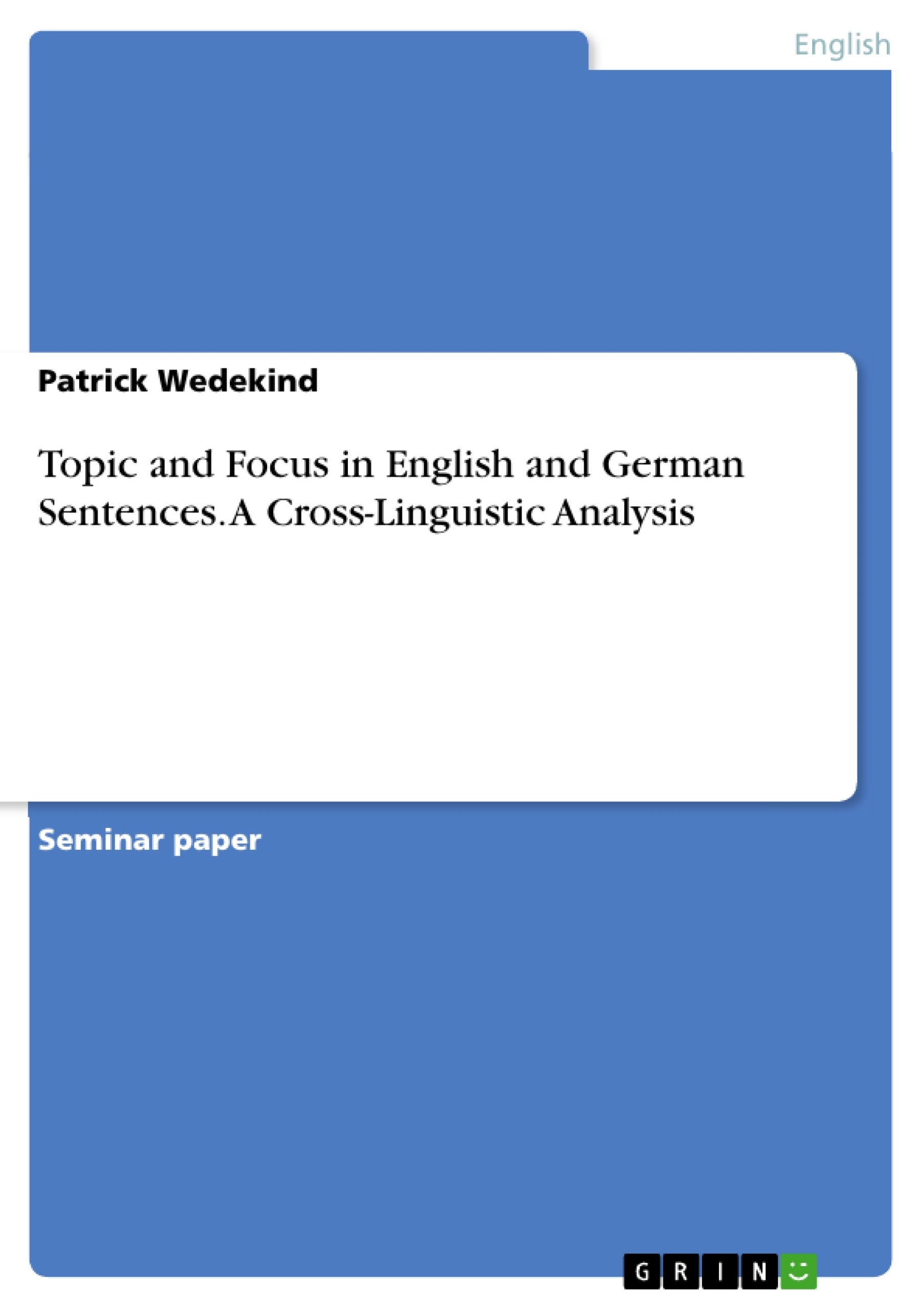When semanticists examine the way speakers or writers code the knowledge they expect their listeners or readers to have in a sentence, one of the most important aspects to consider is the information structure of the sentence. Within this information structure, a subdivision is commonly made between already known or given information, which is usually referred to as the ‘topic’ of the sentence, and new information, normally called the ‘focus’. While some languages, for instance Somali, possess explicit focus markers to indicate the focalization of certain elements in a sentence, English has to rely mainly on the intonation of a sentence as the focus marker due to its rigid subject-verb-object (SVO) word order.
German, on the other hand, provides a greater syntactic flexibility since it is a highly inflected language in which the grammatical function of words is less defined by their position within a sentence than their grammatical cases. Therefore, speakers of German do not have to rely solely on changing the intonation in order to mark a sentence’s focus, but may also use syntactic displacement as a focus marker. Nevertheless, syntactic changes to focalize certain elements in a sentence are also possible to a limited extent in English, but they require special constructions not necessary for focus marking in German.
Since these differences in focus marking seem to be significant in light of the fact that both English and German are Germanic languages, they will constitute the main focus of this paper. I will begin my study of topic and focus in the two languages with an examination of the several strategies for focusing employed in spoken English and German and then continue with those strategies typically used in writing. In doing this, I take account of the limitation of some of these strategies to one of these two different forms of communication.
Inhaltsverzeichnis (Table of Contents)
- Introduction
- Focus Marking in Spoken English and German
- Focus Marking in Written English and German
- Conclusion
Zielsetzung und Themenschwerpunkte (Objectives and Key Themes)
This paper examines the differences in focus marking between English and German, two closely related Germanic languages. The study focuses on spoken and written communication, exploring how these languages employ various strategies to highlight specific elements within a sentence.
- Strategies for focusing in spoken English and German
- Strategies for focusing in written English and German
- The role of syntax and intonation in focus marking
- The limitations of certain focus marking strategies in different communication modes
- The impact of word order on focus placement in English and German
Zusammenfassung der Kapitel (Chapter Summaries)
The introduction discusses the concept of information structure in sentences, highlighting the distinction between topic and focus. It then introduces the specific focus of the paper, which is the analysis of focus marking strategies in spoken and written English and German.
Chapter 2 examines the strategies for marking focus in spoken English and German. It emphasizes the role of intonation and primary stress in highlighting specific elements within a sentence.
Chapter 3 delves into the strategies for marking focus in written English and German. It explains how the standard word order in English and German influences focus placement, and how syntactic manipulations can alter focus in German.
Schlüsselwörter (Keywords)
The key terms and concepts explored in this paper include focus marking, information structure, topic, focus, intonation, primary stress, syntax, word order, spoken language, written language, English, German, Germanic languages.
- Quote paper
- Master of Arts Patrick Wedekind (Author), 2011, Topic and Focus in English and German Sentences. A Cross-Linguistic Analysis, Munich, GRIN Verlag, https://www.grin.com/document/320908



